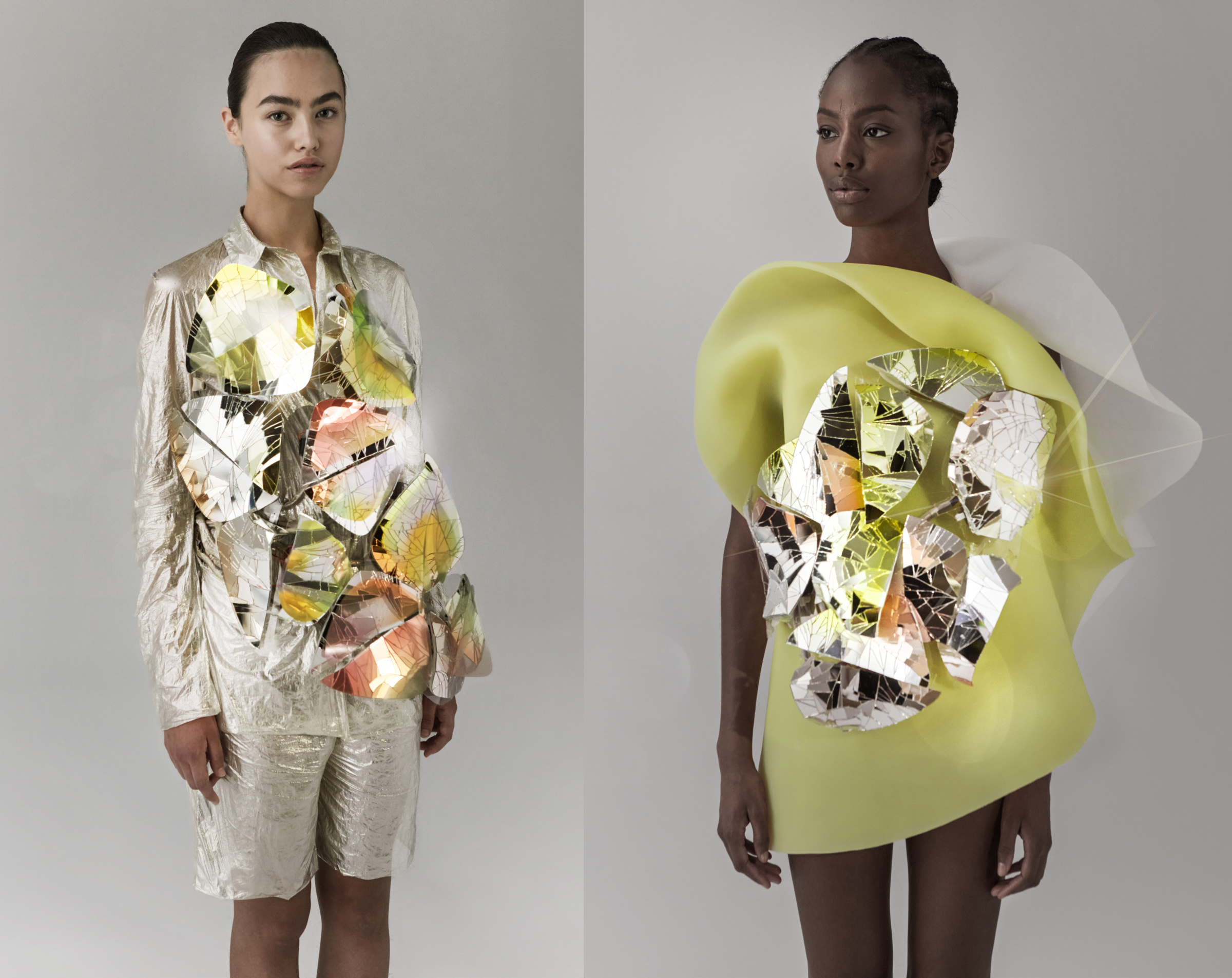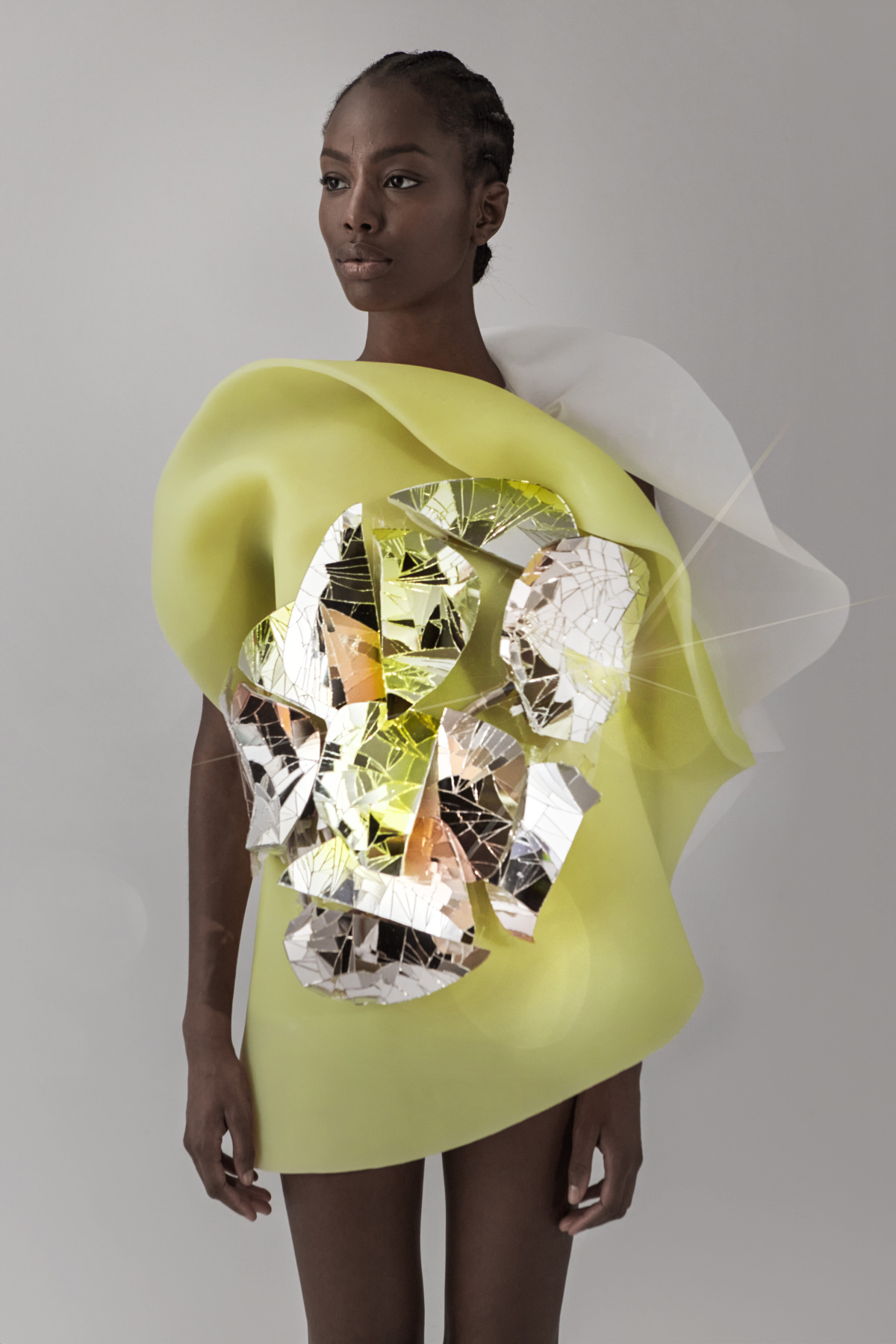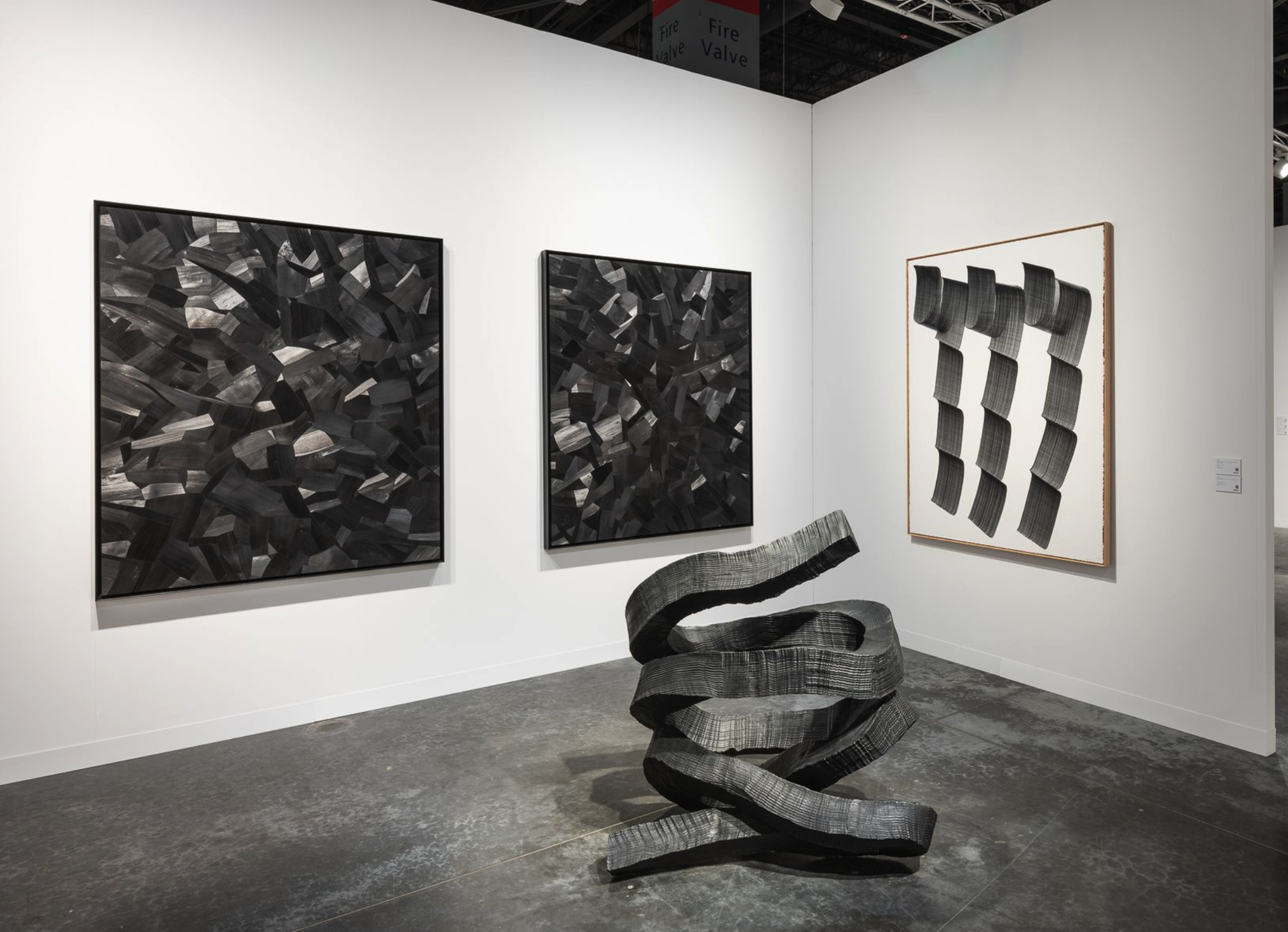Montreal-based fashion designer Ying Gao’s latest collection, All Mirrors, reimagines fashion as an interactive experience that’s part philosophy, part tech experiment, and part sci-fi inspiration. With a blend of robotics and flexible mirrors, Ying explores the interplay between how we perceive ourselves and how we’re perceived by others.
- All Mirrors dives into the relationship we have with self-image in a digital age, using fashion as a bridge between who we are and how we connect to the world around us.
- Ying’s inspiration stems from years of exploring “behavioral garments”—interactive designs that react to their environment, making the lines between the wearer, the observer, and the garment itself disappear.
Unveiled on November 18 during an intimate event in Montreal, guests were able to experience All Mirrors firsthand and closely observe how the garments were made. Ying opted for a quieter, immersive showcase that emphasized the themes of perception and interrelation rather than following a traditional runway format.
All Mirrors dives into the relationship we have with self-image in a digital age, using fashion as a bridge between who we are and how we connect to the world around us. Ying’s inspiration stems from years of exploring “behavioral garments”—interactive designs that react to their environment, making the lines between the wearer, the observer, and the garment itself disappear.
In this collection Ying pushes us to reflect on how, in a world dominated by social media and a constant chase for perfection, our reality might be shaped by how others see us. The materials used—flexible glass-silicon mirrors, medical cotton gauze, 18-carat gold, and high-tech electronics—merge advanced technology with an organic, ethereal aesthetic.
“A garment is never just worn—it is seen, interpreted, and at times misinterpreted,” Ying says. “With All Mirrors, I wanted to create pieces that actively question this dynamic, asking not just what we see but how and why we are seen.”
- Mirrors and AI are at the center of this collection, highlighting themes of fragmented perspectives and shifting identities.
- Integrated into a piece of clothing and worn, the mirror becomes almost intentional: it anchors itself to the movements of the person who brings it to life, its diverse reflections looking out.
Mirrors and AI are at the center of this collection, highlighting themes of fragmented perspectives and shifting identities. Integrated into a piece of clothing and worn, the mirror becomes almost intentional: it anchors itself to the movements of the person who brings it to life, its diverse reflections looking out.
Powered by robotics, the mirrors shift and warp when an observer looks into them, creating what Ying calls a “reassembled reality.” This theme also draws from historian Umberto Eco’s thoughts on mirrors as “bridges between the virtual and the real.” The mirrors are not passive reflectors but active participants in a dialogue about perception and self-image.
“These garments do not merely clothe the body,” Ying says. “They envelop the intangible, the fleeting interactions and perceptions that connect us to others.”
Based in Montreal, Ying is as much an artist and thinker as she is a fashion designer. A professor at the University of Quebec and the former head of the Fashion, Jewelry, and Accessories Design Program at HEAD Genève, she has consistently pushed fashion’s boundaries through the years. While these pieces aren’t available for purchase, they’ve caught the attention of art collectors and curators eager to explore the intersection of fashion and art.







